Cleaning the Tank Part 2
A clean tank is not only good for your fish and plants; it also helps you appreciate the beauty of your tank.
You should clean your tank regularly every one or two weeks. Don’t worry, though, cleaning your tank takes just a few steps that should not take too long if you are prepared. Before you start, you will need a few things:
- Gravel Cleaning Siphon
- Water Conditioner or Chlorine Remover
- Two Buckets
- Algae Scrubber
- Spray Bottle
- Vinegar
- Paper towels
Water Conditioner
When cleaning your tank, you need to remove and replace about 20% – 30% of the water. Start out by filling a bucket with the amount of water you intend to replace. If you need to adjust the water to your requirements, it’s best to do this ahead of time. Make sure this water is the same temperature and pH level as the water already in the tank to prevent shock.
The following are the steps you need to take to clean your tank.
Step 1 – Remove Algae
To remove algae you will use your algae scrubber on the sides of your tank and your fingers to gently rub it off your plants. All your decorations should be removed and cleaned with the algae scrapper. If the algae scrapper is not cleaning off your decorations enough, you can soak your non-porous decorations in a weak bleach solution (about 1 part bleach to 20 parts water) for about 20 minutes. After soaking them, you will need to place them in clean water for another 20 minutes to remove the bleach. You can also add water conditioner to help remove the active ion in bleach, hypochlorite. Before returning your decorations to your tank, make sure there is no bleach smell on the decorations. Note that this technique could remove the paint from your decorations and it should never be used with plaster decorations.
Algae Scraper
Step 2 – Change the Water
Next, you will need to remove 20% – 30% of your tank’s water using a gravel siphon. Keep in mind that you should never remove more than 1/3 of the water in your tank at one time. If you do this, it will damage your biological filter.
Your siphon must be completely submerged in your tank and all the air bubbles need to be gone from the pipe for it to work properly. Once the pipe is submerged, place your bucket (not the one with your new water!) under the tank. Place the other end of the gravel siphon over the bucket’s opening, keeping your finger closed on the end of the tube. With the large end still in the tank, release the small end and the water will start to flow out of your tank and into the bucket. While this is happening, you will want to quickly dig around in the gravel with the large end of the hose. The gravel won’t get sucked up, but the lightweight debris such as fish waste and uneaten food will be removed. You can adjust the water flow by putting your finger over the opening to slow down the water flow or make sure no gravel is escaping.
A dip-tube, sometimes called a sediment-remover, is a piece of glass tubing that will also help you remove sediment from your tank. The upper end of the tube is closed with your finger and the lower end is placed in the sediment. Once in place, you raise your finger and debris will go into the dip. Once that happens, you put your finger over the tube again, remove the tube and dump the debris into your bucket. Some dip-tubes have a trip in the middle so you can make several dips before you have to empty the tube. After you have done a few dips your tank will be cleaner.
Once you have removed 20% – 30% of the water, slowly pour the water from the first bucket, into the tank. Make sure you pour the water in slowly so it won’t scatter the gravel or uproot the plants.
Step 3 – Clean the Outside
Once the inside of your tank is clean, you should then clean the outside. All you need to do this is a spray bottle with 1 part vinegar and 10 parts water. Spray it on the tank and wipe it off and you’re done!
QUESTIONS
- Why is a clean tank so important for a discus aquarium?
- How can you prevent algae from growing in your tank?
- How often do you clean your discus aquarium?

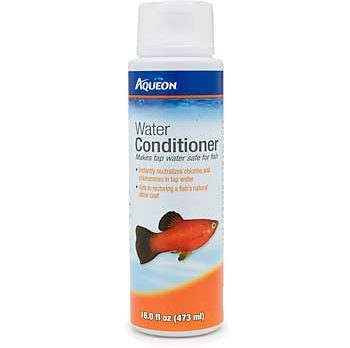
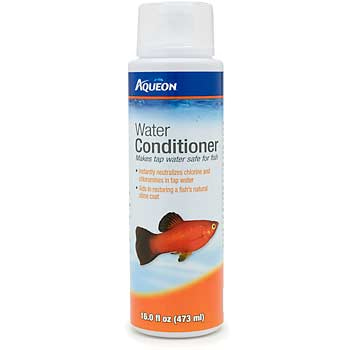
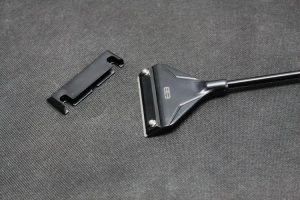
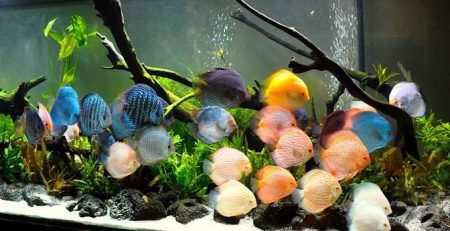
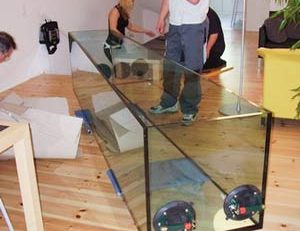
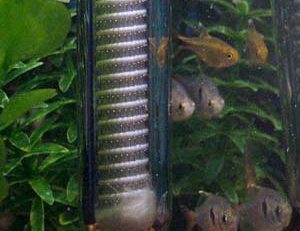
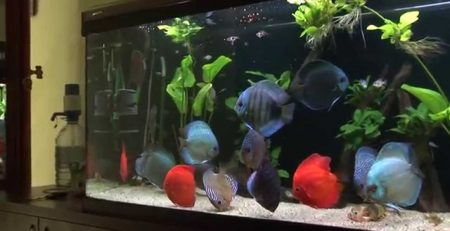
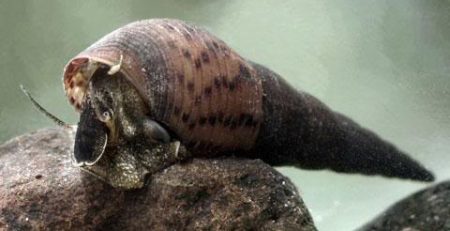


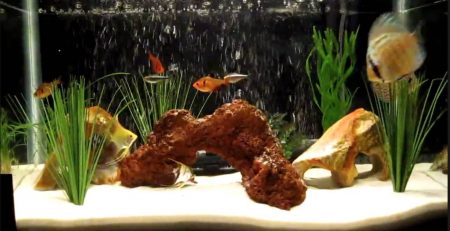


Leave a Reply
You must be logged in to post a comment.